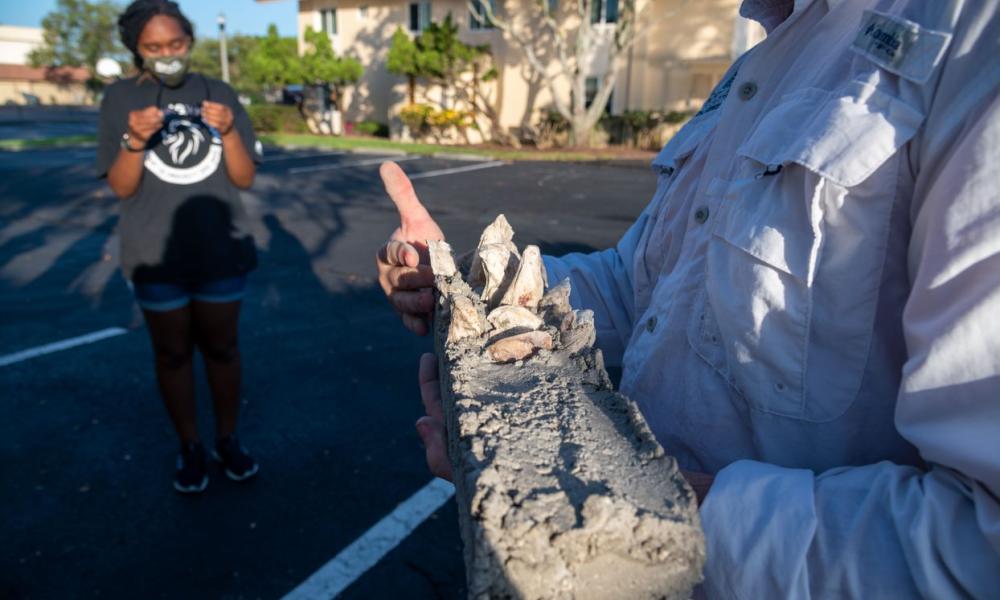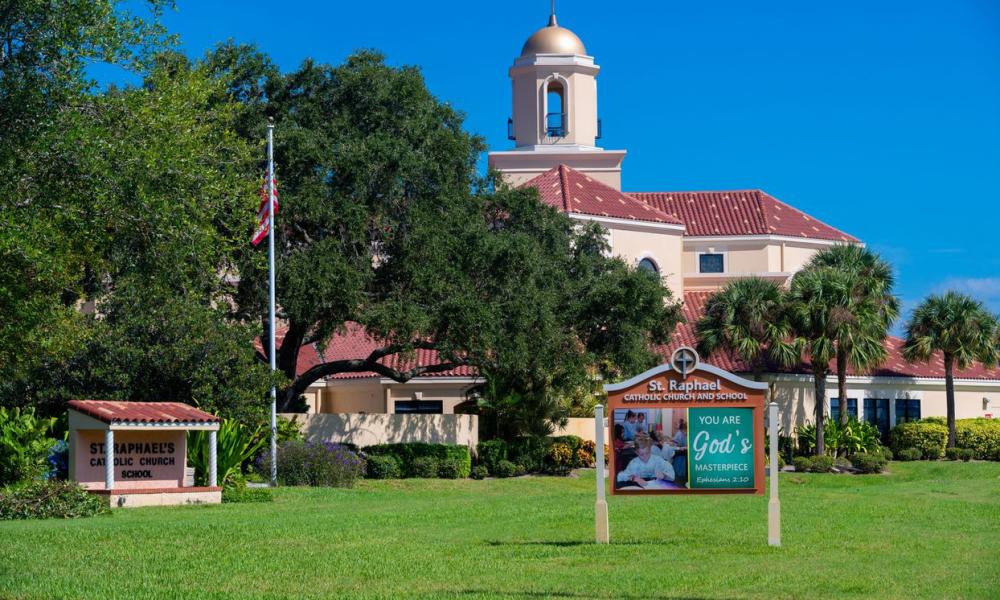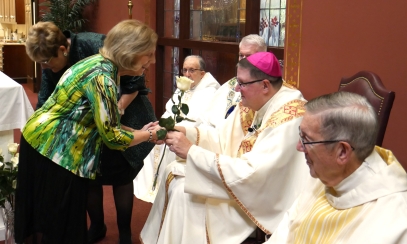
Catholics Take Action to Care for the Waters of Tampa Bay
After seeing hordes of fish rotting in the waterway just feet from their school building, and inspired by Pope Francis’ call to care for the planet in his encyclical Laudato Si’, Father Curtis Carro Pastor of St. Raphael Catholic Church and School and a group of his middle grade students jumped into action. Their mission was to improve water quality and create a habitat for marine animals who live just off the seawall where the school sits on Snell Isle in St. Petersburg.
Working with Saint Leo University Natural Sciences Department, they decided to restore their part of Smacks Bayou to something more natural by creating an oyster reef. Oysters not only filter 50 gallons of water a day, they also provide a home to fish, crabs, and a host of other animals.
“Everything is gifted to us,” said Father Carro. “Creation has been entrusted to us to care for.”
Dr. William Ellis, a marine biologist at St. Leo Universty, says the approach the group is using for oyster reef restoration differs from the norm. The new method uses modular components that are small and can be handled by anyone, including middle school student volunteers. Instead of large and heavy structures that need to be installed using barges and lifts, or many stacked bags of loose oyster shell, the St. Raphael students created a restoration structure made with recycled oyster shells embedded in concrete blocks. These blocks were placed in the marine waterway along the school’s campus.
“This project is very meaningful to me, not only as a scientist, but also as a Catholic native of St. Petersburg. Working with students and members of the greater community to enhance oyster reef establishment is a wonderful way to improve water quality and wildlife habitat. Together, we can care for the part of the planet we call home,” said Dr. Ellis.
The oysters get their own nutrients by sucking in water and consuming tiny organisms. This process helps purify the water while extra nitrogen is filtered out. If all goes well, oysters will grow on the bricks, improving water quality for marine life there and even the broader Tampa Bay.
“I am encouraged by the data collected thus far for the viability of oyster gardening and I firmly believe this partnership will allow all to become better educated in the care for God’s creation,” said Bishop Gregory Parkes.
Dr. Ellis and Father Carro plan to expand the project and pray their efforts will inspire parents, grandparents and neighbors with waterfront access to work with the school to start a water quality-enhancing oyster garden adjacent to their own seawall.
The results of the pilot program will be used to support a grant application to expand the project.
“The work,” has just begun said Father Carro. “I think it’s going to be an ongoing effort.”
If you would like to get information and advice on how to design and implement your own oyster garden email questions to, bill.ellis@saintleo.edu





